Affiliate links on Android Authority may earn us a commission. Learn more.
Google Pixel & Pixel XL vs the competition
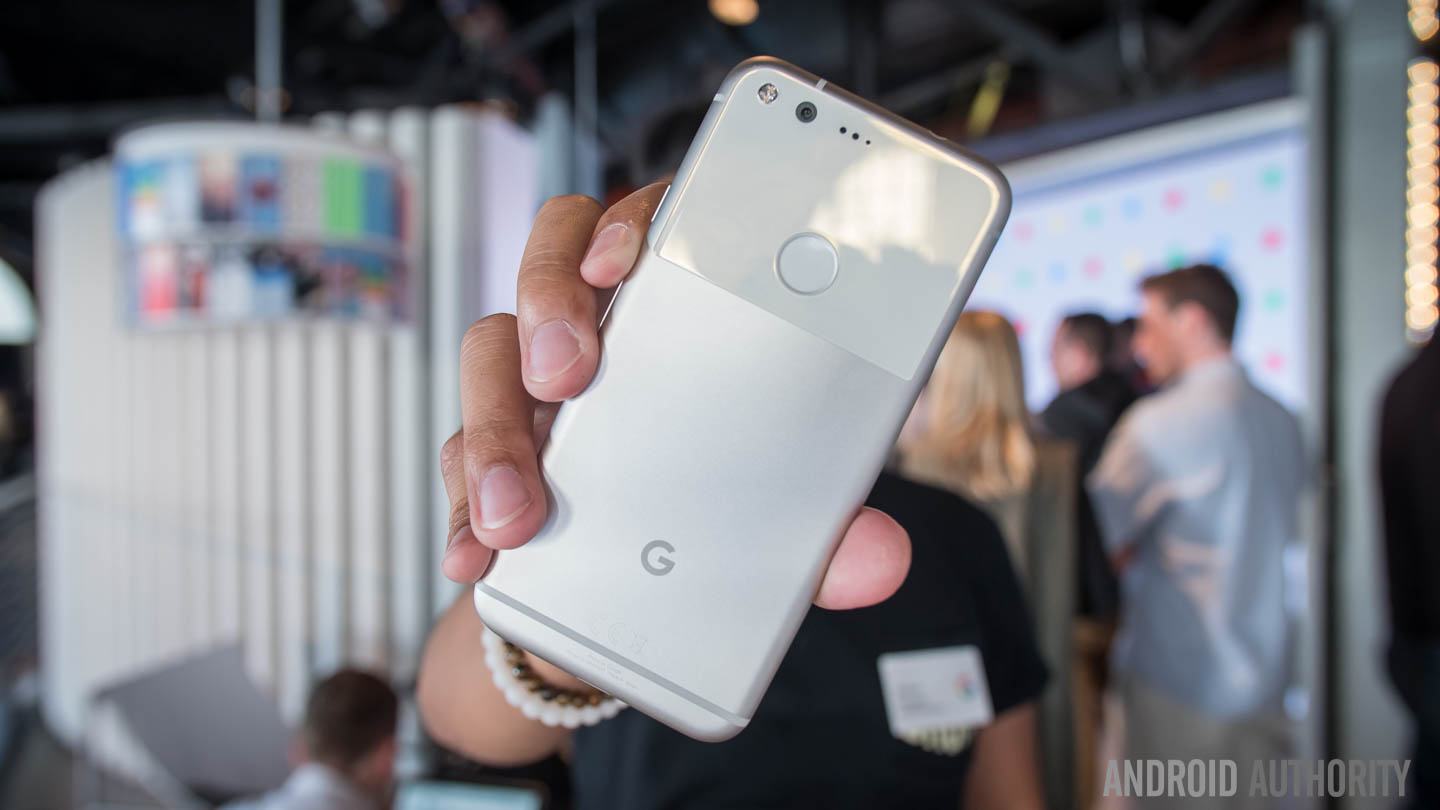
Representing a major shift in direction away from the Nexus family before it, Google has now taken the veil off its new Pixel line-up. The Pixel and Pixel XL are designed by Google from the ground up and are ready to go head-to-toe with high-end flagships from Apple, Samsung, and other major smartphone brands. Not only does the Pixel lineup offer top of the line specs, but also a premium design and premium pricing to match.
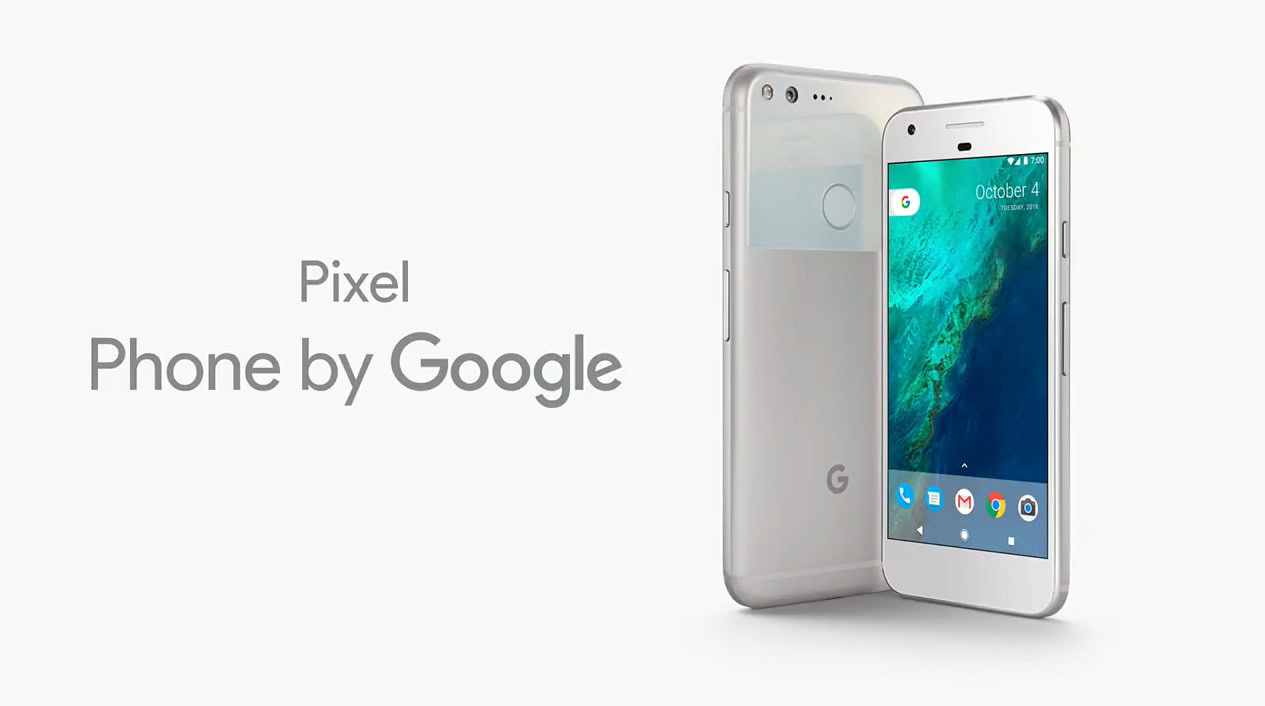
Of course, there are no shortage of solid flagship options in 2016, so let’s take a look at how the new Google Pixel and Pixel XL stack up against the competition and point out some of its potential strengths and weaknesses. For this comparison, we’re going to stack the two new Pixel phones up against the new LG V20, HTC10, Moto Z Force, Samsung’s Galaxy S7 / S7 edge, and the iPhone 7 / 7 Plus.
| Pixel / Pixel XL | iPhone 7 / 7 Plus | Galaxy S7 / S7 edge | LG V20 | HTC 10 | Moto Z Force | |
|---|---|---|---|---|---|---|
Display | Pixel / Pixel XL 5-inch 1080p AMOLED / 5.5-inch QHD AMOLED | iPhone 7 / 7 Plus 4.7 / 5.5-inch LCD (1334x750 / 1920x1080) | Galaxy S7 / S7 edge 5.1 / 5.5-inch QHD AMOLED (2560x1400) | LG V20 5.7-inch QHD LCD (2560x1440) | HTC 10 5.2-inch QHD LCD (2560x1440) | Moto Z Force 5.5-inch QHD AMOLED (2560x1440) |
SoC | Pixel / Pixel XL Snapdragon 821 | iPhone 7 / 7 Plus Apple A10 Fusion | Galaxy S7 / S7 edge Exynos 8890 or Snapdragon 820 | LG V20 Snapdragon 820 | HTC 10 Snapdragon 820 | Moto Z Force Snapdragon 820 |
CPU | Pixel / Pixel XL 4x 2.15GHz Kryo | iPhone 7 / 7 Plus 2x high performance 2x low performance | Galaxy S7 / S7 edge 4x 2.3GHz Samsung M1 + 4x 1.6GHz Cortex-A53 or 4x 2.15GHz Kryo | LG V20 4x 2.15GHz Kryo | HTC 10 4x 2.15GHz Kryo | Moto Z Force 4x 2.15GHz Kryo |
GPU | Pixel / Pixel XL Adreno 530 | iPhone 7 / 7 Plus TBA | Galaxy S7 / S7 edge Mali-T880 MP12 or Adreno 530 | LG V20 Adreno 530 | HTC 10 Adreno 530 | Moto Z Force Adreno 530 |
RAM | Pixel / Pixel XL 4GB | iPhone 7 / 7 Plus 2 / 3GB | Galaxy S7 / S7 edge 4GB | LG V20 4GB | HTC 10 4GB | Moto Z Force 4GB |
Storage | Pixel / Pixel XL 32 / 128GB | iPhone 7 / 7 Plus 32 / 128 / 256GB | Galaxy S7 / S7 edge 32 / 64GB | LG V20 32 / 64GB | HTC 10 32 / 64GB | Moto Z Force 32 / 64GB |
MicroSD | Pixel / Pixel XL No | iPhone 7 / 7 Plus No | Galaxy S7 / S7 edge Yes | LG V20 Yes | HTC 10 Yes | Moto Z Force Yes |
Starting with the processing hardware, we see Qualcomm Snapdragon’s across the board, except with the obvious exception of Apple. The Snapdragon 820 has been the staple across pretty much every Android flagship on the market, baring Samsung’s Exynos 8890 inside some of its Galaxy S7 and Note 7 smartphones. The Pixel and Pixel XL opt for Qualcomm’s latest Snapdragon 821 chipset, but this is more of a modest upgrade that offers tweaks and fixes, as opposed to a major boost to performance over the familiar Snapdragon 820.
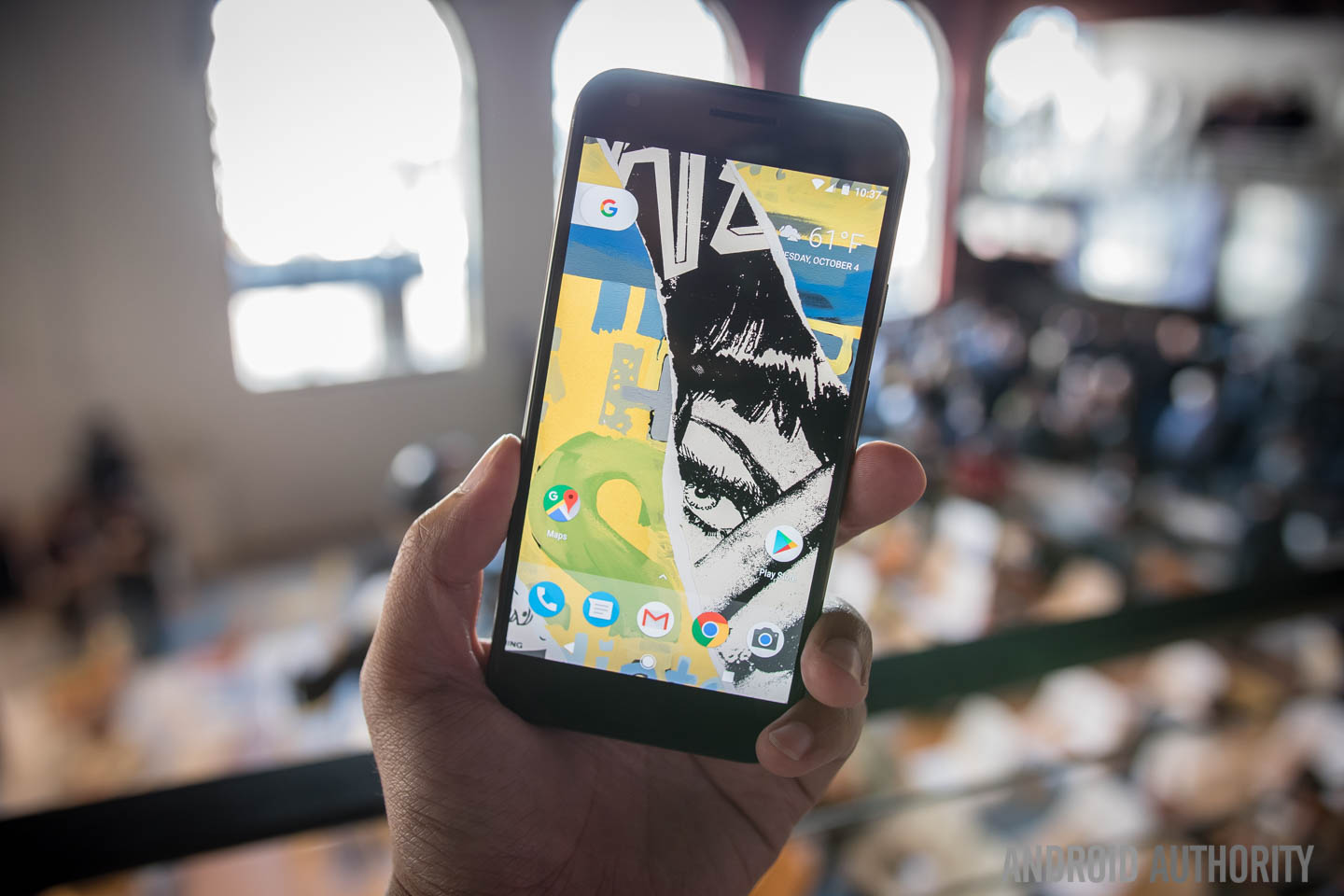
The Snapdragon 821 offers the same quad-core Kryo CPUs clocked at the same 2.15GHz, and an Adreno 530 GPU for some serious gaming performance. The Pixel phones are also paired up with 4GB of RAM, as it every other flagship on our list, again except the iPhone 7 family, so performance is going to be virtually identical across all of the flagships on the market right now. Due to Apple’s strong software/hardware integration, the iPhone 7 is arguably still the best performer on the list when it comes to gaming, but the different is honestly negligible when it comes to real world use.
The 32 / 128GB storage options in the Pixel are a slight step up from the maximum 64GB memory that you’ll find in most of the other Android flagships. Although the lack of a microSD card will still put some consumers off, especially if they’re fans of portable media.
QHD is the name of the game, with the iPhone 7 and 7 Plus the only holdouts among the major flagships of 2016. There’s plenty of size differences here and it comes down to whether you want a large screen phone or something more modest (around or slightly under 5-inches). Obviously differences in technology – AMOLED vs LCD – will continue to exist as well, but at the end of the day, all the flagships mentioned will provide great viewing experiences.
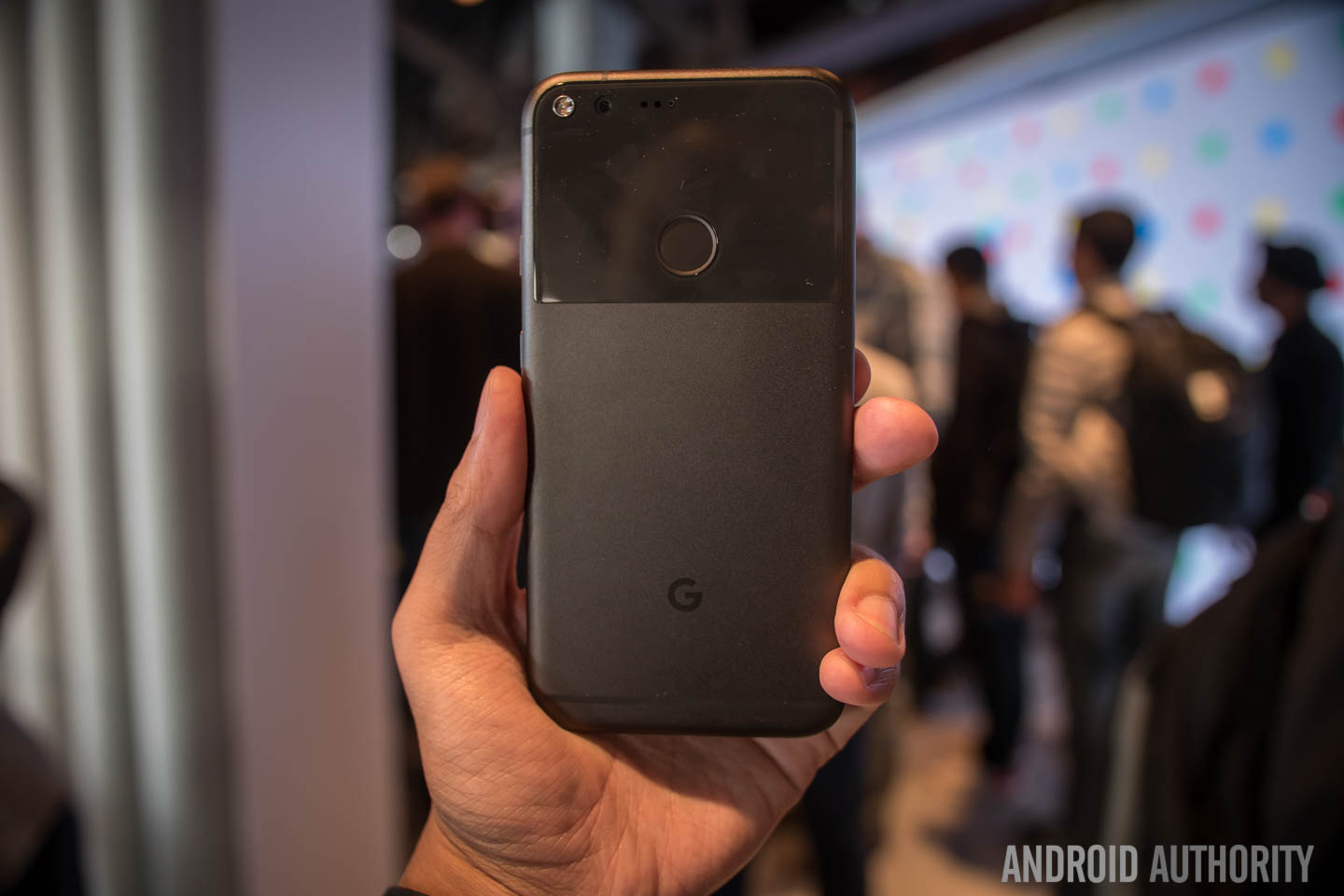
Moving on to camera technology, the year 2016 has seen pretty much every manufacturer across the board continue to step up its game, and Google seems to be no exception here. While the Nexus 6P already offered a pretty solid camera package last year, the Pixel reportedly has the best camera package available right now, at least according to DxO Mark. At a score of 89, the Pixel currently tops both the Galaxy S7 / Edge, Note 7, and the iPhone 7 / Plus — the previous top spot contenders.
Obviously we can’t say a whole lot about the camera experience until we’ve had more time with the device, but the 12.3MP front shooter is sounding like a champ. Of course, just about any of the above cameras are going to provide a solid experience but there are some things to consider, like if OIS is important to you (something the Pixel doesn’t have but the rest here do), or whether you are interested in a dual camera configuration like you’ll find with the LG V20.
On the front, you’ll find an 8MP camera with f/2.4 aperture, 1.4 µm pixels, and Full HD video capture (30fps). At least on paper, this is the most impressive looking of the bunch with a resolution of 8MP and an f/2.4 aperture. Bottom-line, if you’re a selfie lover, you’re going to like the Pixel and Pixel XL.
| Pixel / Pixel XL | iPhone 7 / 7 Plus | Galaxy S7 / S7 edge | LG V20 | HTC 10 | Moto Z Force | |
|---|---|---|---|---|---|---|
Cameras | Pixel / Pixel XL 12.3MP f/2.0 rear 8MP front | iPhone 7 / 7 Plus 12MP / 2x 12MP f/1.8 rear with OIS 7MP f/2.2 front | Galaxy S7 / S7 edge 12MP f/1.7 rear with OIS & PDAF 5MP f/1.7 front | LG V20 16MP f/1.8 + 8MP f/2.4 rear with OIS, laser & PDAF 5MP f/1.9 front | HTC 10 12MP f/1.8 rear, with OIS & laser AF 5MP f/1.8 front with OIS | Moto Z Force 21MP f/1.8 rear with laser & PDAF, OIS 5MP f/2.2 front |
Battery | Pixel / Pixel XL 2,700 / 3,450mAh | iPhone 7 / 7 Plus 1960 / 2900mAh | Galaxy S7 / S7 edge 3,000 / 3,600mAh | LG V20 3,200mAh | HTC 10 3,000mAh | Moto Z Force 3,500mAh |
NFC | Pixel / Pixel XL Yes | iPhone 7 / 7 Plus Yes (Apple Pay only) | Galaxy S7 / S7 edge Yes | LG V20 Yes | HTC 10 Yes | Moto Z Force Yes |
Fingerprint | Pixel / Pixel XL Yes | iPhone 7 / 7 Plus Yes | Galaxy S7 / S7 edge Yes | LG V20 Yes | HTC 10 Yes | Moto Z Force Yes |
Fast Charge | Pixel / Pixel XL Yes | iPhone 7 / 7 Plus No | Galaxy S7 / S7 edge Yes | LG V20 Quick Charge 3.0 | HTC 10 Quick Charge 3.0 | Moto Z Force Yes |
IP Rating | Pixel / Pixel XL No | iPhone 7 / 7 Plus IP67 | Galaxy S7 / S7 edge IP68 | LG V20 No | HTC 10 No | Moto Z Force No |
3.5mm audio | Pixel / Pixel XL Yes | iPhone 7 / 7 Plus No | Galaxy S7 / S7 edge Yes | LG V20 Yes | HTC 10 Yes | Moto Z Force No |
Extras | Pixel / Pixel XL USB Type-C | iPhone 7 / 7 Plus Lightning Port, 3DTouch, Apple Pay | Galaxy S7 / S7 edge Wireless Charging, Samsung Pay | LG V20 USB Type-C, MIL-STD-810G certified, 32-bit/192kHz audio | HTC 10 USB Type-C | Moto Z Force USB Type-C, Shatterproof display |
OS | Pixel / Pixel XL Android 7.1 | iPhone 7 / 7 Plus iOS 10 | Galaxy S7 / S7 edge Android 6.0 | LG V20 Android 7.0 | HTC 10 Android 6.0 | Moto Z Force Android 6.0 |
When it comes to battery size, the Pixel XL is at the very top of the pack with a 3450 mAh battery, bested only by the Moto Z Force with its 3500 mAh battery and the S7 Edge with its 3600 mAh battery. The 5-inch Pixel obviously has a smaller battery at 2700 mAh, but for its size that’s actually not half bad either. Considering the Pixel and Pixel XL run pure Android without all the bloat, we can expect the battery performance for both models to be towards the very top of their perspective size categories. For now we can’t get into specifics until we’ve had more time with the device, but we feel pretty confident saying battery life shouldn’t be an issue with the new Pixel family.
For the most part, all the phones above have a lot in common in terms of display resolution, processors, and even camera packages — though the newness of the Pixel means it has a slight advantage in both camera and processor fronts. The Pixel also could potentially have some advantages when it comes to battery life. But what about all the ‘extras’ you expect in today’s flagships?
For the most part, the Pixel ticks all the right boxes here too. USB Type-C? Check. Quick charging? Check. Fingerprint scanner? Yup. That said, there’s really nothing else too compelling here when it comes to hardware extras. No waterproofing, no crazy eye scanning. Still, it at the very least meets the standard you’d expect from a high-end flagship in 2016, even if it doesn’t bring anything new to the table in terms of extra hardware tricks.
More than just specs
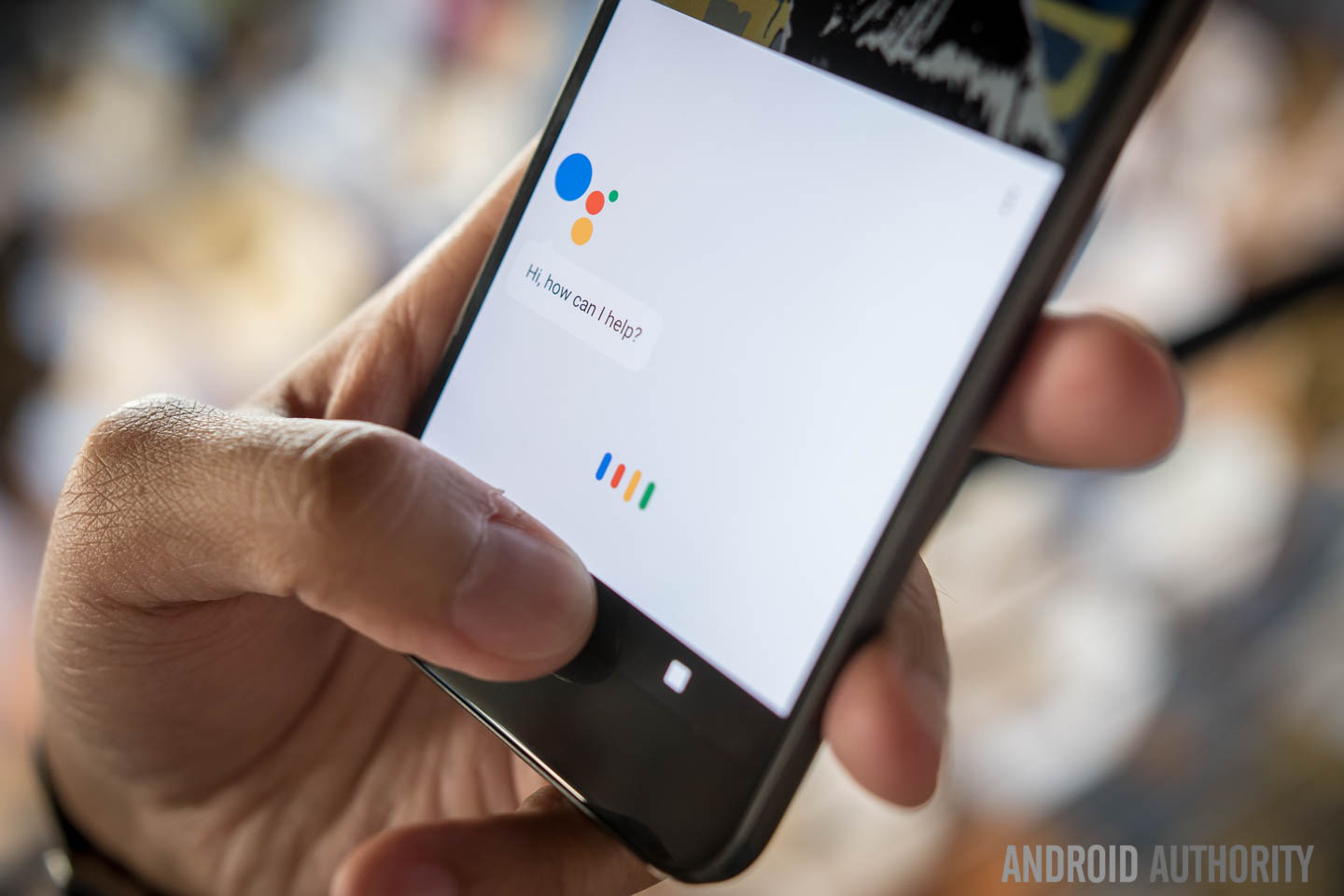
Of course, there’s a lot more to a phone then what you’ll find by simply looking at the spec sheet. The Pixel stands out from the pack in a few key ways. First, it has a clean, uncluttered build of Android that should ensure a faster, smoother experience than you’ll get with the other Android devices on the list. It’s also noteworthy that it offers up the newly announced Android 7.1 Nougat out of the box, and will have automatic updates that will ensure its software stays as up to date (and secure) as you’d find with the something like the iPhone.
Read Next: Problems with the Google Pixel and Pixel XL and how to fix them
Another big extra is the Google Assistant that’s baked in here, providing a better experience than you’d find with simply Google Now. It’s also arguably a real improvement over Apple’s Siri as well. It’s also worth mentioning that the Pixel and Pixel XL offer an exclusive launcher, dubbed the Pixel launcher. Google’s Pixel and Pixel XL are also built with virtual reality in mind, and will pair well with the new Daydream View headset Google also announced today.
Can Pixel find its place in the sun?
Obviously it’s still too early to say whether or not Google’s new smartphone strategy will find a success. The Pixel has a lot going for it in terms of aesthetics, specs, software updates, and so much more. That said, it doesn’t have nearly as many software extras as you’d get with something like the Galaxy S7 series. This might be considered a positive for many of us, but considering the Pixel’s premium asking price, at $649 and up, Google is pricing itself at the same level as its Galaxy and iPhone competitors, two brands that are already well established in the minds of consumers.
What do you think of the Pixel and Pixel XL? Let us know your thoughts down in the comments.